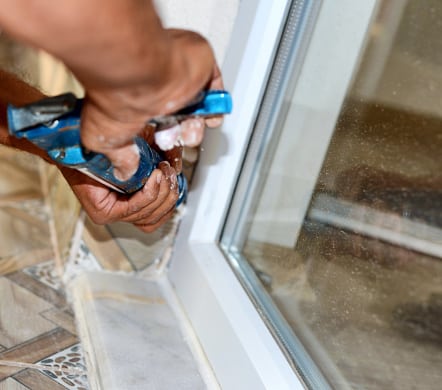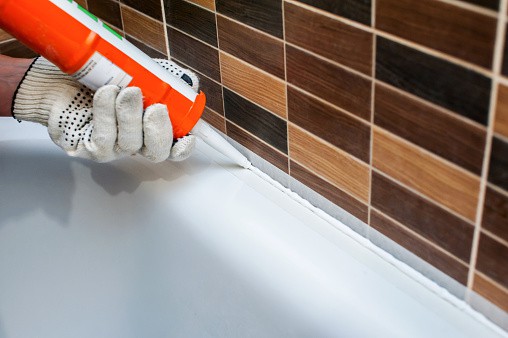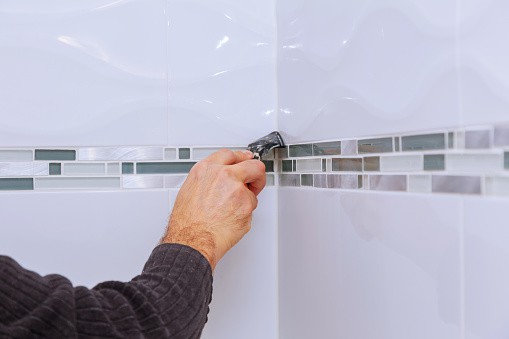To get you started, here is the tutorial on how to seal tile floor. Tile floors must be sealed properly to avoid dirt, stains, and other damage.
How To Seal Tile Floor

In hotter climates, a tile floor is ideal for keeping a room as cool as possible. It’s also a long-lasting material that can be arranged in a variety of ways.
Tile, on the other hand, has the disadvantage of being relatively easy to stain.
Stains that penetrate the tile’s pores seep to the bottom and are difficult to remove. This can result in permanent blemishes that can ruin the tile’s pattern.
Sealing a tile floor is a good idea if you want to avoid this from happening. Spills and stains will bead up on the surface rather than embedding themselves in the tile.
We’ve outlined all of the steps for sealing a tile floor in this article. You can protect your tile and keep it clean for many years if you carefully follow the instructions.
Tiles: Porous Vs. Non-Porous
Before you begin, determine whether or not your tile flooring requires sealing.
Certain tiles are already glazed, making them resistant to water. Non-porous tiles do not absorb stains and are resistant to moisture.
Ceramic and porcelain tiles are non-porous. Typically made of limestone or concrete, porous tiles have a dull, matte finish.
Even if your floor is made entirely of nonporous tiles, the grout used to connect them is extremely porous.
Grout should always be sealed, even more so if it is going to be used in a moist environment, such as a bathroom. When there is a possibility of moisture seeping through the grout, it should be sealed.
Contents Of Sealing A Tile Floor

Sealing a tile is a simple process that does not necessitate the use of any special tools or techniques.
Evaluation Of Grout
Before beginning to seal your tile floor, check to see if your grout has been sealed previously. After the grout has been installed, the installers frequently seal it.
However, some installers skip this step because grout cannot be sealed until it has hardened. You’ll have to put it to the test to determine for yourself.
With a droplet, apply a drop of water to the grout. Monitor them to determine whether they float to the surface or sink into the grout.
If they penetrate the cement grout, they must be sealed. Otherwise, any water spilled on the floor will seep beneath the tile, possibly resulting in the growth of mold or mildew.
Decide On The Tile Type
Additionally, you should determine the type of tile you have and whether or not it requires sealing. Porcelain and ceramic tiles, as previously stated, are typically glazed and not porous.
It is critical, however, that you double-check. When it comes to water getting beneath your tile floor, it’s better to be safe than sorry.
Simply by looking at it, you can tell what type of tile it is. If the tile is glossy, it is almost certainly glazed and impervious to water.
If the tile has a dull appearance and a matte finish, it is most likely made of limestone or brick. Water must be kept out of these materials to prevent it from penetrating the pores and causing damage.
Disinfect The Tiles
Before sealing your tile, ensure that it is as clean as possible.
Scrub the floor in sections with an acid substitute spray bottle. Avoid using water on porous, unsealed tile.
Clean both the tiles and the grout with the acid substitute. After you’ve sealed it, inspect it to ensure it’s as clean as you desire.
Ensure that the tile is completely dry before proceeding to the next step.
Make Use Of A Sealant
Seal your tile flooring with an impregnator sealer. The impregnator sealer is designed to penetrate porous surfaces and fill any holes that may exist.
When this type of sealer is used, you can be certain that no moisture will enter the tile’s pores. Additionally, it will leave a lovely sheen on your floor, significantly improving its appearance.
Apply the seal with a specialized sealer applicator. Permit the sealant to penetrate the pores of the grout.
Allow the sealer to dry overnight after you’ve completed the first coat. Apply a second coat and allow it to cure overnight to seal every pore.
Your tiles will be completely sealed and protected from spills and moisture after the second coat.
Frequently Asked Questions About Sealing Tiled Floors

How Long Does It Typically Take To Seal A Tile Floor?
It could take up to three days, depending on the size of the area you’re sealing.
This will take slightly longer because you will need to wait for the sealer to dry between coats. Complete the application in no more than an hour or two.
How Long Does Grout Sealer Take To Dry?
A grout sealer has a lifespan of five to ten years. This is true if you use a high-quality sealer and properly apply it.
Conduct a water droplet test about once a year to ensure that you do not need to reseal it.
What Happens If The Grout Isn’t Sealed Properly?
If you do not seal the grout, you risk having moisture trapped beneath your tiles.
This not only encourages the growth of mold and mildew but also has the potential to damage the floor. The tiles themselves, as well as the wooden subfloor beneath, may begin to deteriorate.
Final Thoughts
Sealing your tile floor is a simple and effective way to keep it looking new for years to come.
By following the steps outlined in this guide, you can be sure that your tile will be protected from moisture damage. This will not only improve its appearance but also extend its lifespan significantly.
Don’t wait until your tile is damaged to seal it; by then, it may be too late. Protect your investment by sealing your tile today.
Related Posts:
